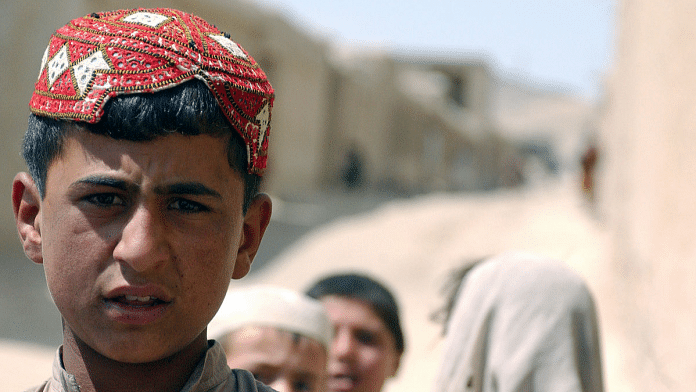The drone became the most visible symbol of the US war on terror. Flying at a height of 50,000 feet, invisible to its intended victims, the drone had the ability to hover overhead for hours, with little escaping its scrutiny. According to Akbar Ahmed, for a Muslim tribesman such combat was both dishonourable and sacrilegious. ‘By appropriating the powers of God through the drone, in its capacity to see and not be seen and deliver death without warning, trial, or judgment, Americans were by definition blasphemous. For them, every day was like 9/11.
The US, on the other hand, saw the drone as a critical weapon in fighting terrorism and keeping American ‘boots off the ground’ while killing the ‘bad guys’. The technological ‘precision’ of the drones came in for a lot of praise, even from President Obama. In January 2012 he explained, ‘I want to make sure that people understand actually drones have not caused a huge number of civilian casualties. For the most part, they have been very precise, precision strikes against al Qaeda and their affiliates.’ In November 2012 the Secretary of Defense, Leon Panetta, described America’s war on terror as ‘the most precise campaign in the history of warfare.’
Drone strikes or ‘covert action program to target al Qaeda leadership and other groups inside Pakistan’ began under President George W. Bush when forty-five strikes took place in FATA. They increased under President Obama when from 2009, from an average of one strike every forty days it became one every four days by mid-2011, especially in North Waziristan. Of 118 strikes in 2010, the highest number of attacks up to that date, 104, hit North Waziristan. Between the first drone strike in Pakistan in 2004 and 2012, only eighteen in the Tribal Areas were outside Waziristan.
The number of civilian casualties, however, has been controversial. In March 2011, Pak Maj. Gen. Ghayur Mehmood, the commander in North Waziristan, told reporters in Miram Shah: ‘Myths and rumors about U.S. Predator strikes and the casualty figures are many, but it’s a reality that many of those being killed in these strikes are hard-core elements, a sizable number of them foreigners. Yes, there are a few civilian casualties in such precision strikes, but a majority of those eliminated are terrorists, including foreign terrorist elements.’ Mehmood also provided official numbers: According to the government’s figures, 164 drone strikes had taken place since 2007, killing 964 terrorists—793 locals and 171 foreigners. The dead included Arabs, Chechens, Filipinos, Moroccans, Tajiks, and Uzbeks.
As in other areas, Pakistan adopted a duplicitous policy on the drones: publicly they opposed the strikes but in private accepted them. The WikiLeaks cache of US State Department cables blew the lid off the Pak government’s complicity in the drone campaign. Thus, according to a February 2008 cable from the US embassy in Islamabad Pak Army chief, Gen. Ashfaq Parvez Kayani, asked US Cent Com commander, Adm. William Fallon, for ‘continuous Predator coverage of the conflict area’ in South Waziristan, where the Pakistani Army was fighting the militants at the time.
In an August 2008 meeting with US Ambassador Patterson, Prime Minister Yousuf Raza Gilani gave her his go-ahead for a drone campaign in Pakistan’s tribal regions. ‘I don’t care if they do it as long as they get the right people,’ he told her, according to a US cable. ‘We’ll protest in the National Assembly and then ignore it.’
Not surprisingly, for example, on 12 April 2012, the Pak parliament unanimously approved a resolution that inter alia, included a demand for immediate cessation of drone strikes on its territory. This was all for show. According to a Washington Post report of October 2013, top-secret CIA documents and Pakistani diplomatic memos obtained by it showed that despite public protests denouncing the CIA’s drone campaign, top officials in the Pakistan government had for years secretly endorsed the program and routinely received classified briefings on strikes and casualty counts. Several documents referred to a direct Pakistani role in the selection of targets. A 2010 entry, for example, describes hitting a location ‘at the request of your government.’ Another from that year refers to a ‘network of locations associated with a joint CIA-ISI targeting effort.’
Some of the tribesmen too seemed to be playing their own devious games with the drones. The Arab News reported in May 2011 that the Mehsud and Wazir were manipulating drone strikes to settle scores. It alleged that tribesmen serving as paid CIA informants were directing American drones against their rivals, falsely claiming that these individuals were terror targets.
Perhaps the best observation regarding the use of air power against the Pashtuns on the North-West Frontier came from British General Sir Andrew Skeen: ‘My own view is that these people [the Pashtun tribes] are really so invulnerable in their miserable property and in their persons save from accurate close range use of ground weapons and are moreover so scattered and so adept at cover and concealment that I doubt whether any tribe that has the will to resist, will ever be coerced by air power alone.’ Written eighty years ago and before the advent of drones, ‘Skeen’s insight into the use of air power against the Pashtun tribes in the region remains a useful caveat about the limits of modern technology.’
Also read: Ideological changes in Kabul mattered little to India, till the Taliban came to power
The United States exit 2020–21
The longest war of the US finally came to a close on 31 August 2021 when the last US soldier flew out from Kabul International airport. It was estimated that the US had spent more than $2 trillion in the war of attrition in Afghanistan. Another $1.4 trillion would be needed to meet the cost of medical expenses of thousands of wounded war veterans in the next forty years, according to a New York Times report. A study conducted by Watson Institute at Brown University in collaboration with Boston University put the total cost of the Afghan war at $2.26 trillion till September 2020. Under its Costs of War Project, the institute detailed its most recent estimates, finding that most of the money came out of
$933 billion in Department of Defence (DoD) overseas contingency funding. The rest includes: $443 billion in DoD base budget increases to support the war; $296 billion to care for veterans; $59 billion in state overseas contingency funds; and $530 billion to cover the interest on the money borrowed to fund twenty years of deployments. The study found that US lost 2,442 soldiers in Afghanistan, 1,145 soldiers of allied forces (from NATO-led fifty-one-nation ISAF coalition) and 3,904 US contractors, and an additional 72,253 national military and police in Afghanistan and Pakistan died while conducting or supporting US
military missions. United Nations Assistance Mission in Afghanistan (UNAMA) claims that more than 111,000 were killed or injured since it began systematically recording civilian casualties in 2009.
The US had started looking for an exit from about 2009–10 under President Obama, based on an assessment that there was no military solution and talks with the Taliban were the only way forward. The complex on-again–off-again negotiations process took eleven years to reach fruition, resulting in the Doha Agreement that was signed on 29 February 2020. As soon as it signed the deal with the Taliban, the US was committed to exit Afghanistan, ensuring that the Taliban had no incentive to compromise. The Taliban held all the cards in talks with the Kabul government.
 This excerpt from Tilak Devasher’s The Pashtuns has been published with permission from HarperCollins India.
This excerpt from Tilak Devasher’s The Pashtuns has been published with permission from HarperCollins India.



